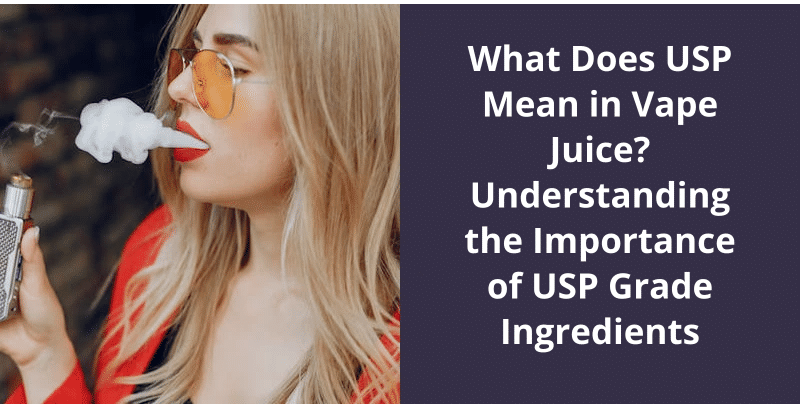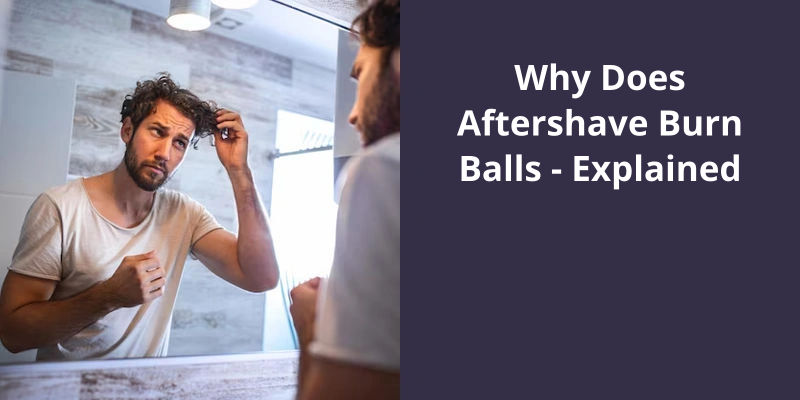Vaping has grown into a massive industry, worth billions of dollars worldwide. With so many products on offer, it's essential for customers to know the quality of the ingredients they're using. That's where USP graded vape juice comes in. When purchasing vape juice, you may have come across the USP label, but what does it mean? Essentially, a USP Grade rating confirms that the chemicals used in the vape juice meet the highest quality standards set by the United States Pharmacopeia – a nonprofit authority that guides the pharmaceutical industry. These standards are meant to ensure that substances used in medicine, supplements, and food ingredients are safe to consume, free of contaminants, and accurately labeled.

What Is USP Grade Vegetable Glycerin in Vape?
VG works as a stabilizer agent for other ingredients in vape juices and as a carrier for the flavor and nicotine that vapers so crave. Additionally, VG is a naturally derived product that’s often made from the oils of coconut or palm trees. This means that USP grade vegetable glycerin is considered safe for human consumption and often meets strict manufacturing standards set by the United States Pharmacopeia (USP).
For instance, VG is often found in the personal care industry as an emollient. This means it’s used to moisturize skin and hair. Additionally, VG can be found in the food industry as a sweetener and in the pharmaceutical industry to help stabilize certain drugs.
It’s a natural, safe product that’s used in a range of applications, such as personal care and pharmaceuticals.
The Role of Vegetable Glycerin in Creating Thick, Dense Clouds in Vape Products.
- Veggie glycerin contributes to thick, dense vape clouds.
- It’s a natural, plant-based ingredient.
- It can also add sweetness to vaping flavors.
- Some users may experience throat irritation if too much glycerin is used.
Now that we know what USP stands for and what it is, let’s delve deeper into it’s history and it’s role in the pharmaceutical industry.
What Does Usp Stand For?
As a scientific organization, the USP plays an important role in ensuring that the medications and health products used by Americans are safe and effective. Essentially, USP is responsible for setting the standards by which drugs are produced and tested in the United States. These standards help ensure that the medication we take is of high quality and will work as expected.
The USP is also actively involved in the research and development of new drugs and medical technologies. This includes collaborations with industry partners, academic institutions, and government agencies to advance the development of new therapies and treatments for a wide range of diseases and conditions.
As with any substance, it’s important to consider the potential risks and benefits before using it. While VG and PG are generally safe for consumption, it’s essential to understand that they may have different effects on your body. In this article, we’ll explore the question of whether 70/30 vape juice is safe, and what you should know before you start vaping.
Is 70 30 Vape Juice Safe?
Vaping has become increasingly popular over the years, and it’s no surprise why. With the wide variety of liquids available in the market, vape enthusiasts can customize their experience to suit their preferences. One of the most critical factors of vaping is the e-liquid or vape juice used. The liquid is heated to produce a vapor that’s inhaled into the lungs. The composition of the vape juice can dictate how enjoyable and safe the vaping experience is.
70/30 vape juice contains a blend of VG (vegetable glycerin) and PG (propylene glycol) at a ratio of 70% VG to 30% PG. This ratio has become the go-to mixture for a good reason as it offers the best balance of flavor and vapor production while minimizing health risks. When choosing a vape juice, it’s crucial to consider the levels of these two components. While VG is safe to use and has minimal effects on health, PG can irritate the throat, leading to allergies. In addition, PG has been known to cause dry mouth and nose and has been linked with respiratory problems.
It’s worth noting that 70/30 vape juice is suitable for sub-ohm vaping, which is when a coil has a resistance of less than one ohm. Sub-ohm vaping generates more vapor and requires a more substantial power output. This type of vaping can give a more substantial throat hit but may not be suitable for new or inexperienced vapers. It’s wise to check the devices user manual before using sub-ohm vaping.
Safety should always be a top priority when vaping. It may be more expensive to buy high-quality e-liquid. However, it can provide a better vaping experience and assurance that only premium and safe ingredients were used, making it worth the investment.
What Is the Difference Between VG and PG in Vape Juice?
- VG stands for vegetable glycerin, and PG stands for propylene glycol.
- VG is thicker and produces more vapor, while PG is thinner and produces less vapor but more flavor.
- VG is also sweeter than PG and can lead to a buildup on your vape coils over time.
- PG is a better carrier for nicotine and is less likely to cause allergic reactions.
- Some people prefer a higher VG or PG ratio in their vape juice depending on their personal preferences and devices.
Source: In e-liquid, what’s the difference between 50/50 and 70/30 …
Understanding the meaning of USP in the world of marketing and advertising is important in order to effectively communicate the unique features and benefits of a product or service. In the UK, USP is used as an abbreviation for “unique selling proposition” or “unique selling point”, which refers to the distinctive attribute or quality that sets a product apart from it’s competitors. This can be a powerful tool in capturing the attention of potential customers and driving sales.
What Does USP Mean in UK?
When it comes to marketing and advertising, businesses are constantly looking for ways to stand out in a crowded marketplace. One way to do this is by identifying and articulating your Unique Selling Proposition (USP). In British English, USP is an abbreviation for “unique selling proposition” or “unique selling point”. This refers to a specific characteristic or benefit of a product that sets it apart from the competition.
The concept of USP has been around for decades and was first popularized by advertising executive Rosser Reeves in the 1940s. Reeves believed that every product or brand should have a unique selling point that differentiates it from competitors and drives consumer preference. He argued that advertising should focus on this unique benefit rather than simply focusing on product features or generic benefits.
In the UK, USP is widely used by marketing and advertising professionals to differentiate products and brands in a crowded marketplace. Companies may use their USP in advertising campaigns, on product packaging, or in sales pitches to highlight their unique benefits. For example, a skincare brand might focus on the fact that their products are made from all-natural ingredients, while a car manufacturer might highlight their vehicles fuel efficiency.
To identify your USP, it’s important to understand your target audience and what theyre looking for. You should also research your competitors and identify areas where you can differentiate yourself. Your USP should be something that’s difficult for competitors to replicate and that resonates with your target audience. Once youve identified your USP, it should be an integral part of your brand messaging and marketing strategy.
Conclusion
In the world of vaping, USP Grade ingredients are considered the gold standard. These ingredients not only meet the stringent requirements set forth by the United States Pharmacopeia but are also among the purest and highest quality available. This commitment to quality and safety is crucial in an industry that’s constantly evolving, and it’s through organizations like USP that we’re able to maintain these high standards.





